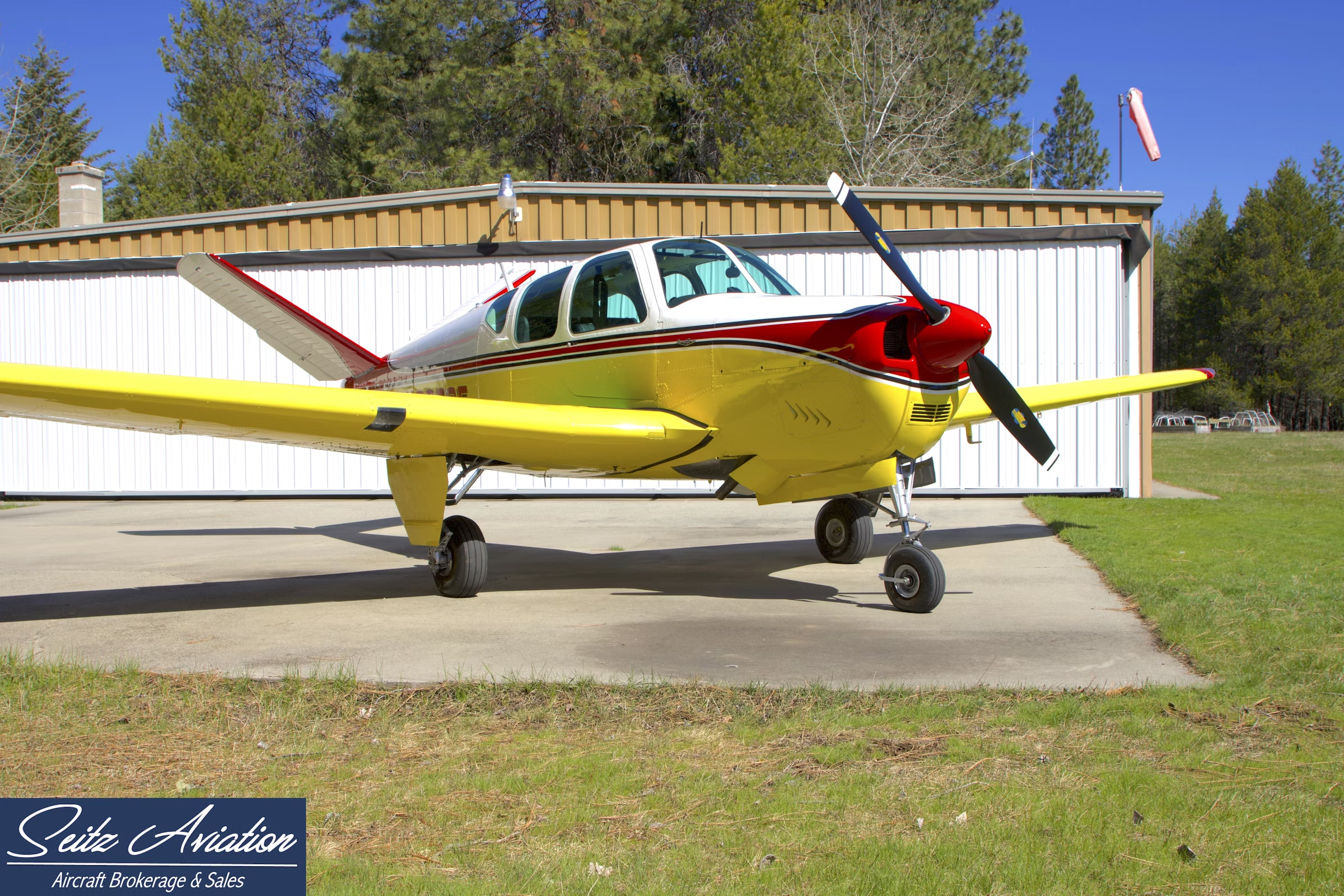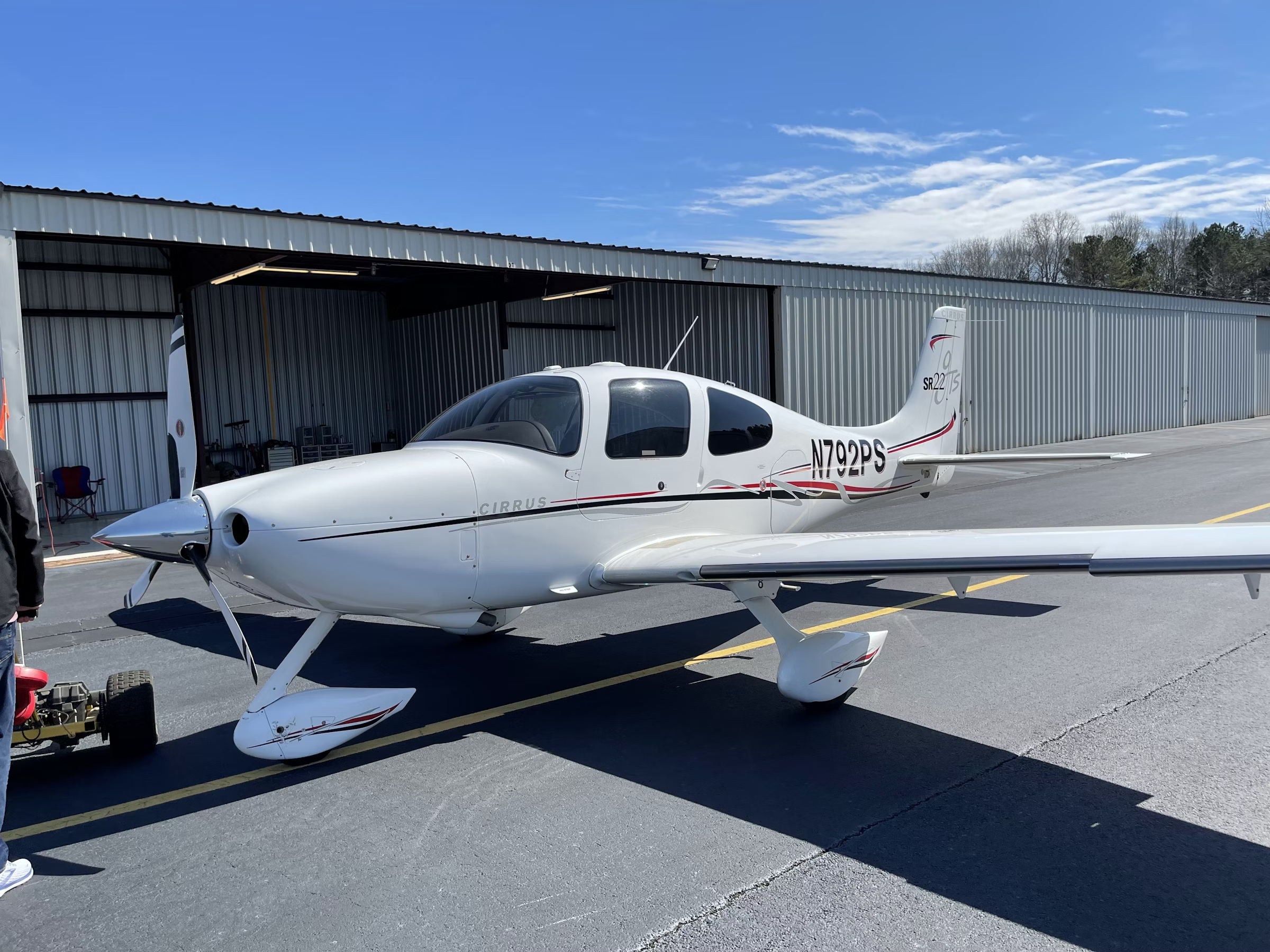
The low cost and accessibility of airplanes for the STOL Drag class were significant parts of the draw for RARA. Tony Cruz & Mark E. Loper
If you’ve ever attended the Stihl National Championship Air Races at the Reno-Stead Airport west of Reno, Nevada, you know the event brands itself as “the fastest motorsport on earth,” with the slogan “fly low, fly fast, turn left.” Low and slow has never factored into the equation since the races began decades ago. But times are changing at the Reno air races with a whole new class: STOL Drag (for “Short Takeoff and Landing”). While these airplanes might not be flying anywhere near 500 mph like the classic Reno racers, they have a knack for getting the crowds going.
What on earth is STOL Drag? Two light airplanes line up side by side in between two vertical flags, scurry off the ground, and fly as fast as they can just a few feet off the dirt along a 2,000-foot straight track. Toward the end of the course, the airplanes quickly slow down by pulling up into a severe slip, then land beyond a line (also marked by vertical flags) that designates the halfway point of the course. The airplanes come to a complete stop (tailwheels down, for those who are so equipped) straight ahead—10 degrees or more off heading results in disqualification—spin around 180 degrees, then fly in the opposite direction and land beyond the start/stop line. The pilot who gets his or her airplane stopped first wins.
STOL Drag was founded by high-adrenaline backcountry adventurer and social media phenom Kevin Quinn. Originally from Alaska, Quinn has operated Points North Heli-Adventures, a heli-ski outfit in Cordova, Alaska, for more than two decades. Quinn is also a hardcore backcountry pilot, with more than 8,500 hours of tailwheel time, and the founder and organizer of the annual High Sierra Fly-In, where STOL Drag was first introduced. High Sierra has become an extremely successful event, and it celebrated its 10th year in October. While there is no limit to the number of attendees, Quinn capped the number of airplane registrations at 500 for this year. About 170 of those were registered to fly in the STOL Drag competition atthe fly-in.
Pilots are initially timed on the course in hopes of qualifying as one of the top 16 pilots. From that point, it’s elimination time. The loser in each heat is eliminated and the winner moves on to the next round. The final round crowns the winner. The heats are often too close to call, prompting a thrilling rerun.
According to the Reno Air Race Association’s chairman and CEO, Fred Telling, the STOL Drag idea was introduced to RARA by secretary of the board Joey Scolari and COO Tony Logoteta after they watched the competition at the High Sierra Fly-In this past year. Telling was enthused by not only the excitement of the event itself but also their social media following. Research will show Quinn and his High Sierra friends, who collectively call themselves the Flying Cowboys, have about 29 million followers combined.
Over the span of several months, RARA, Quinn and the FAA worked out the details for STOL Drag at NCAR, including a plan for the demonstration race in 2019 as part of the accreditation process. Pending the final FAA approval letter, the event will be the seventh official class.
Like all of the racers at NCAR, the STOL Drag pilots had to attend the Pylon Racing School—a nearly weeklong training program that takes place in June each year. Eighteen pilots went through the PRS training and qualified to participate in this year’s demonstration race. However, for various reasons, a few of the qualified pilots were unable to fly.
The Airplanes of STOL
The most disappointing dropout was fan favorite Draco, a PT6-powered Wilga that won the STOL Drag World Championship at the 2018 High Sierra Fly-In. Owner Mike Patey announced on Facebook it would cost him $45,000 to insure Draco for the event, and he decided to pull out. Instead, Patey and Draco were parked in the STOL Drag area taking pictures with their many fans.
Tragically, Draco crashed on takeoff the day after NCAR was over. Crosswind conditions lifted Draco’s left wing, and Patey lost control of his beloved bird. The airplane ended up in the dirt and was severely crunched, but fortunately, Patey, his wife and their passenger walked away unscathed. In a video after the crash, Patey took full responsibility for making the mistake of taking off in the strong crosswind. “I make no excuses,” he said. “Pilot error, pilot error, pilot error. This is going to haunt me for a long time.”
While Draco was one-of-a-kind, the airplane types applicable to STOL Drag are plentiful. Light taildraggers, such as CarbonCubs, Highlanders and Kitfoxes, are the most common, but there are also some benefits to tricycle-gear airplanes, according to Quinn. They won’t nose over if you make an abrupt stop. However, nosewheeled airplanes might not be as efficient as taildraggers at making a 180-degree turn.
One thing that makes STOL Drag particularly compelling is that the value of the airplanes does not correlate with triumph in the heats. Scott Palmer, a crop-duster who flew No. 53 in the STOL Drag demo this year, said in a YouTube video posted by STOL Drag announcer Cory Robin: “I can have a basically stock Kitfox that costs $30,000, and I can go race against these guys in really, really nice backcountry CarbonCubs and Cessna 180s, and all of our times are pretty close.”
Certified airplanes, such as Cessnas and CarbonCubs, also make the event more inviting to general-population pilots. “A lot of people see this airplane and go: ‘It’s a certified airplane. I can go do this.’ And you can!” Bo Ellis said, also in Cory Robin’s video. Ellis was very competitive in his blue-and-white Cessna 180 named STOL80.
The low cost and accessibility of airplanes for the STOL Drag Class were significant parts of the draw for RARA and Telling. “Back when the races were growing in the mid ’60s, when they started up Unlimited racing, the Unlimited racers were going for $25,000,” Telling says. “Things were more affordable for a wider range of people than they are today.” The already-established Formula One Class, Biplane Class, T-6 and Medallion group in the Sport Class are still quite accessible and affordable, certainly more so than the Jets and Unlimiteds and Super Sports.
But it was a goal of Telling’s—who started out as an NCAR spectator in 1984 and, in the early 2000s, moved on to race in and serve as president of the T-6 Class before taking on RARA’s top role a couple of years ago—to make it more inviting for hardcore fans to start racing. “I think the addition of STOL Drag is a great part of that,” Telling says.
Telling also finds the quick pace of the races appealing. “One of the downsides of the races is that there is a lot of downtime in between, but there is no downtime with STOL,” he says. “Once the two airplanes in a heat are done, they clear them and the next two are off.” In fact, Quinn claims the fastest competitors complete a heat in about a minute while the slow ones are about 1 minute, 15 seconds. “We were doing eight to 10 races in the course of 10 minutes,” Quinn says.
Is STOL Drag Safe?
With airplanes flying side by side, sometimes in unusual-looking attitudes and dust swirling in the turns, STOL Drag might, to some, appear to be a bit on the wild side. But according to Quinn, who is hellbent on safety, “The FAA came in and said, ‘This is some of the safest air racing we’ve ever witnessed because it’s straight and level.’” And the skills required for the races can be highly useful in other situations.
“In the backcountry, if you come up short on your spot landing, bad things are going to happen,” Quinn says. “If you can’t land on heading...you’re going to run into a tree, a log, a person or another airplane. If you can’t spin around 180 degrees and maintain directional control and peripheral awareness without going into somebody else’s lane, in the backcountry, you’re going to run into something.”
Quinn is working with the Aircraft Owners and Pilots Association to develop a STOL Drag-specific training program where pilots can come and learn the skills. “We want to make it so it’s a platform where people can end up coming to Reno and/or High Sierra, which will always be home to what we call our World Championship STOL Drag,” he says.
For pilots who want to race STOL Drag in Reno, there will eventually be several qualifying events around the country during the year. Currently, the only established qualifying event is the High Sierra Fly-In, which just took place in October. Once you qualify, you have to go through the PRS course in June to get your race card before you can officially participate in the competition.
In the end, 15 perky taildraggers got out on the NCAR STOL Drag course, which was set up in the rough dirt area on the crowd side of Runway 08/26. The airplanes taxied out parade-style in sequence for their heats. Two planes lined up along the stretched flags, and Kevin Quinn made a full-body wave while calling: “Three, two, one… See ya!” And they’re off.
The airplanes scuttled along the course with the engines pushed to their limits with Cory Robin at the announcer’s stand getting the crowds riled up. Then the power was pulled to idle, the airplanes pulled up in a slip, then dropped down just beyond a line marked by stretched flags. Dust swirled around the fat main tires as the tailwheels spun around to point the airplanes in the opposite direction. Then off they went again in a low-level dash to the finish line. The crowds in the grandstands cheered on the cartoonlike planes as the pilots fought to get them on the ground and stopped as soon as possible after the start/finish line. It was definitely a fast-paced, exciting thing to watch, and the competition was very tight.
In some heats, one airplane would win on the way out only to get beat by its competitor on the way back, often because of an inefficient turn. It seemed impossible to predict who would win. “Bo Ellis flew his dark-blue-and-white Cessna 180 in Reno against the lightest aircraft we had, Hal Stockman’s Rans S-7,” Quinn says. “So, you have a 650-pound Rans going against a 1,700-pound 180, and they’re within a half a second [of each other].”
The course this year was a bit on the rough side, but it didn’t matter because no results were posted in the demonstration race. Quinn says the field will be graded for next year, and Telling looks forward to an expanded STOL Class next year with a purse and trophies for the winners. The National Championship Air Races in Reno are alive and well, and STOL Drag is another exciting draw that, with its terrific social media following, is likely to invigorate a younger generation of aviation enthusiasts.
This story originally published in the December 2019 issue of Flying Magazine

Sign-up for newsletters & special offers!
Get the latest FLYING stories & special offers delivered directly to your inbox






